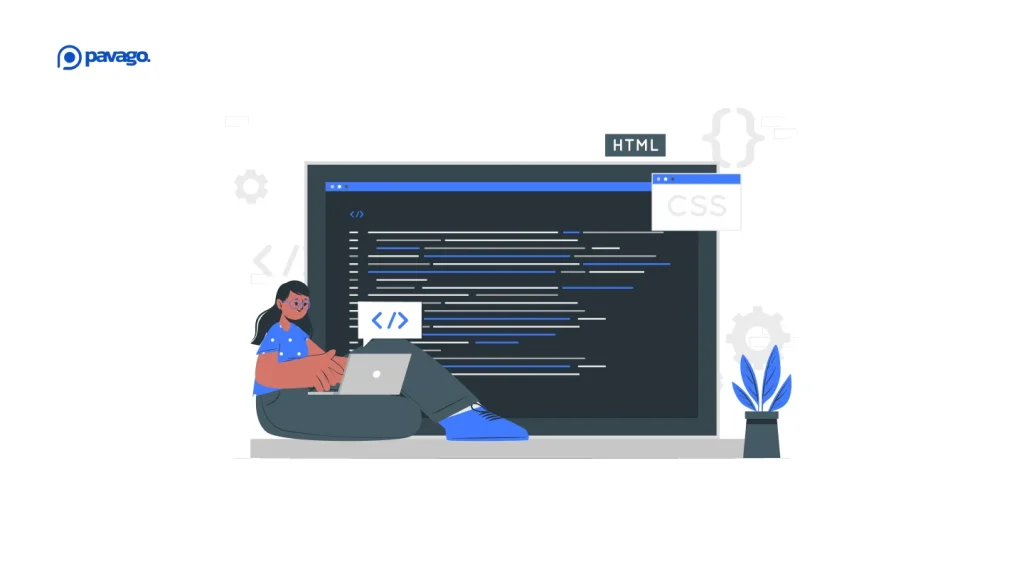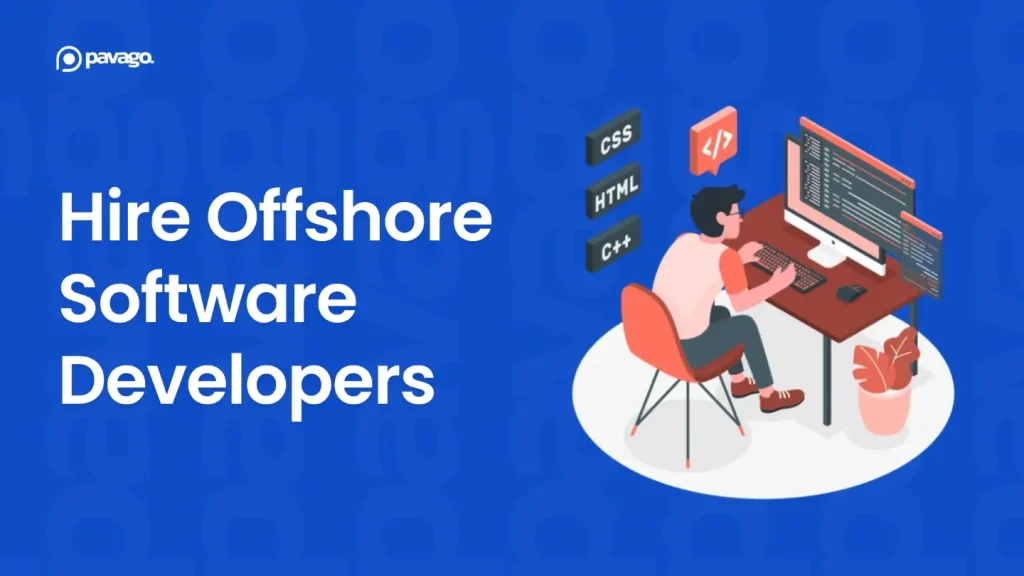Hiring offshore software developers can be a great way to level up your business, but if it’s your first time, it can feel a little overwhelming. There’s a lot to consider – finding the right developers, managing the logistics, and making sure it all goes smoothly.
But here’s the thing: once you know the ropes, it’s much easier to find talented developers at a fraction of what you’d pay locally.
If you’re a startup trying to build your first app or a growing business needing extra hands on deck and wondering how to hire offshore software developers, you’ve come to the right place.
In this guide, we’ll walk you through everything you need to know about hiring offshore software developers, from the benefits to the steps that’ll help you bring the right talent on board.

Onshore vs. Offshore Software Developers: Which Is Right for You?
When it comes to building your development team, you’ve got two main options: hiring in-house or going offshore. Both have their pros and cons, and the right choice depends on your business needs, goals, and budget.
Let’s take a look at the key differences to help you make the right call.
1. Cost-Effectiveness
Onshore software development is often more expensive. Not only do you need to cover salaries, but there are also office costs, benefits, and other overheads that add up.
Offshore developers, on the other hand, can provide significant cost savings, particularly in regions with a lower cost of living. Countries like Pakistan and Latin America offer highly skilled developers at a fraction of the price you’d pay for local talent.
This makes offshore hiring an attractive option for businesses looking to keep costs under control without sacrificing quality.
Related: Cut Development Costs by 50% with Nearshore Software Development
2. Access to Talent
When you hire in-house, you’re limited to the talent pool in your area, which may not always have the specialized skills you need. Offshore hiring gives you access to a much larger talent pool.
Whether you’re looking for developers with niche expertise or trying to find someone with specific experience in a certain technology, offshore staffing allows you to tap into a global network of professionals, meaning you’re more likely to find exactly what you need.
3. Flexibility and Scalability
Offshore software development benefits include unmatched flexibility. You can scale your team up or down based on project needs, without the long-term commitment required for in-house employees.
This is especially useful for short-term projects or businesses that need to respond quickly to changing demands. With in-house teams, scaling can be slower and more costly, as it involves hiring, onboarding, and committing to long-term employment contracts.
4. Time Zone and Collaboration Challenges
While offshore teams can offer the advantage of around-the-clock work (as they continue while your in-house team sleeps), this also comes with its challenges. Time zone differences can make real-time collaboration difficult and may require extra effort to align schedules for meetings and updates.
On the other hand, onshore software development allows spontaneous collaboration, team-building, and face-to-face meetings, making communication smoother in some cases.
Did you know? Pavago can help you find software developers willing to work in your time zone, making collaboration smoother and more efficient.
5. Long-Term Commitment vs. Short-Term Flexibility
In-house developers are typically long-term employees who become deeply ingrained in your company’s culture and processes. While this creates a strong sense of team cohesion and loyalty, it can also come with higher costs, both financially and in terms of the time it takes to hire and onboard the right people.
Offshore developers, however, offer more short-term flexibility and the ability to bring on expertise when you need it most, without the commitment of permanent employment. This is one of the major offshore software development benefits.

How to Hire Offshore Software Developers
Hiring offshore software developers involves several key steps. Here’s a streamlined process to guide you in hiring the right talent for your project:
1. Define Your Project Scope and Needs
Before starting your search for offshore software developers, clearly define the scope and requirements of your project.
What skills do you need? Are you looking for someone with expertise in a specific programming language or technology? Do you need full-time help or just for a specific milestone?
Clearly outlining these needs will help you focus on the right developers.
2. Research and Shortlist Candidates
Once you know exactly what you’re looking for, start researching potential candidates or agencies. If you’re hiring individually, use freelance platforms or work with an agency that specializes in offshore hiring.
Key things to look for:
- Relevant experience in the technologies and languages you’re using.
- Portfolio of past work: Check for projects similar to what you need.
- Client reviews or testimonials: Look at feedback from previous employers or clients to gauge reliability.
3. Conduct Technical Interviews and Assessments
Next, assess the technical skills of the candidates. You want to ensure that their abilities align with your project needs. For freelancers, this means conducting detailed technical interviews and possibly giving them a real-world coding task to complete.
For agencies, request to see sample projects or ask them to conduct coding challenges on your behalf to assess candidates’ skills. Look for proficiency in the languages or tools you’re using and ensure their approach to problem-solving aligns with your project.
4. Evaluate Communication Skills
Communication is key when working with offshore developers. Make sure they can articulate complex ideas clearly and are comfortable working remotely. During the interview, ask questions to assess their ability to:
- Speak clearly in your preferred language (usually English).
- Understand your business requirements.
- Communicate effectively across time zones.
5. Agree on Terms and Contracts
Once you’ve found the right offshore developer, the next step is to agree on the terms of employment. This includes:
- Payment terms (hourly or project-based rates).
- Project deadlines and milestones.
- Ownership of intellectual property.
- Legal and compliance issues like taxes and data privacy laws.
Or, you can skip all this hassle and let Pavago find the perfect candidate for you!
We handle everything – from screening to onboarding and ongoing support – so you can focus solely on growing your business.

What to Keep in Mind When Hiring an Offshore Developer
Now that we’ve answered your question of how to hire offshore software developers, let’s discuss what to keep in mind when bringing them onboard.
While hiring offshore developers can be a cost-effective way to access global talent, there are a few things you should be aware of.
First, legal and compliance issues can vary by country, so it’s important to ensure that both you and the developer are following the necessary regulations. Time zone differences can also pose a challenge, but with clear communication and agreed-upon working hours, it’s entirely manageable.
Quality assurance is key, so make sure you have processes in place to monitor progress and ensure the work meets your standards. Finally, it’s important to balance cost savings with the value you’re getting — don’t just go for the cheapest option, but rather the best value for your investment.
With these considerations in mind, you can ensure a smooth and successful offshore development experience.
Frequently Asked Questions
Where can I find offshore software developers?
Offshore developers can be found through platforms like Upwork, Toptal, and LinkedIn. Additionally, agencies such as Pavago specialize in connecting businesses with pre-vetted offshore developers, streamlining the hiring process.
How do I assess offshore developer candidates?
Evaluate candidates by reviewing their portfolios, conducting technical interviews, and checking references. Agencies like Pavago assist by providing developers who have already undergone rigorous vetting, ensuring a high standard of quality.
What are the typical costs associated with hiring offshore developers?
Hourly rates for offshore developers vary by region and expertise. For instance, developers in Eastern Europe may charge between $25–$50 per hour, while those in Southeast Asia might range from $20–$40 per hour.
How can I ensure effective collaboration with offshore developers?
Establish clear communication channels, set overlapping working hours, and use project management tools. Pavago facilitates smoother collaboration by connecting you with developers willing to work within your preferred time zone.
Should I hire an agency or a freelancer for offshore development?
Agencies offer structured processes, project management, and scalability, making them suitable for long-term or complex projects. Freelancers can be more cost-effective for short-term or specialized tasks, but may require more oversight.
Are nearshore software developers more expensive than offshore developers?
Yes, nearshore development typically costs more than offshore development. For example, developers in Latin America may charge between $40–$75 per hour, while those in Southeast Asia might range from $20–$40 per hour.
Conclusion
Hiring offshore software developers can be a strategic move for businesses looking to scale without stretching their budgets. We hope that this article answered your question, how to hire offshore software developers.
By understanding the process, assessing your needs, and choosing the right agency or freelancer, you can access top-tier software developers from around the globe, all while saving on costs and increasing flexibility.
Whether you decide to hire through a remote staffing agency or go the freelance route, the key is to ensure clear communication, technical expertise, and cultural alignment with your team.
Agencies like Pavago offer a seamless process for connecting small-to-medium-sized businesses with skilled offshore developers, making it easier to find the right fit for your project.
If you’re ready to scale your development team with reliable offshore talent, Pavago is here to help! We can find the perfect developer to meet your needs and work within your timelines.
Let’s chat and take the first step toward building your dream team!
















